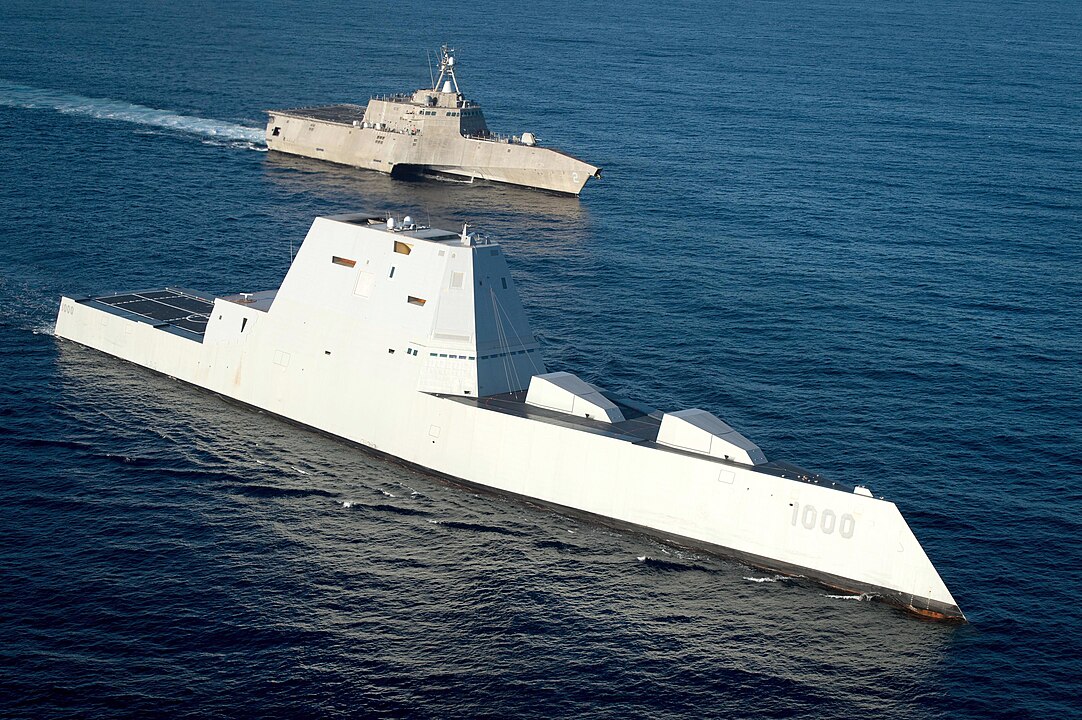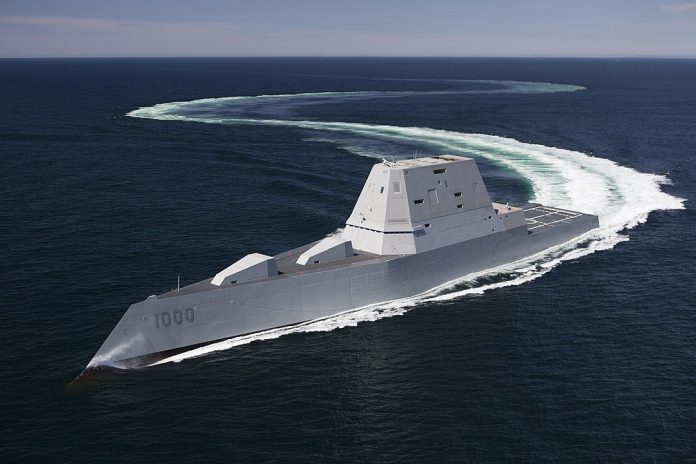
The Zumwalt-class destroyers, once envisioned as the vanguard of the U.S. Navy’s surface fleet, faced a tumultuous journey. Designed for 21st-century naval warfare, these ships were initially hailed for their advanced capabilities and innovative technology.

However, the Zumwalt-class program saw an abrupt halt, with no further vessels to be constructed beyond the three already commissioned—USS Zumwalt (DDG 1000), USS Michael Monsoor (DDG 1001), and USS Lyndon B. Johnson (DDG 1002).

These cutting-edge warships were beset by a plethora of issues. Shortly after its commissioning in 2016, the USS Zumwalt broke down in the Panama Canal, and a year later, the USS Michael Monsoor failed in her sea trials.

Military Watch Magazine reported that the class “suffered from poorly functioning weapons, stalling engines, and an underperformance in their stealth capabilities, among other shortcomings.” Additionally, the absence of certain armaments and the astronomical cost of their specialized artillery shells, priced at around $800,000 each, further diminished the Zumwalt’s allure.

Yet, in a surprising twist, the Department of Defense allocated additional funds for the modernization of the Zumwalt ships in the waning days of 2023.

While the exact modifications remain undisclosed, the integration of future weapon systems, such as the Conventional Prompt Strike (CPS) hypersonic missile structure, is anticipated.

This evolution echoes historical transitions, from the era of the battleships like the famed Iowa-class—which never encountered Japanese battleships in World War II—to today’s multi-mission vessels capable of operating across the globe.

The Zumwalt-class destroyers represent this modern approach. Featuring stealth technology, an electric propulsion system, and a tumblehome hull design, they are built for various missions, including land attack and special operations support.

Their power systems are suitable for future high-energy weapons and sensors, an essential consideration given the increasing threat of land-based anti-ship missiles demonstrated by the Houthi rebel attacks in the Red Sea.

Reflecting on the utility of warships in the modern era, one must consider the lessons learned from past naval encounters. The U.S. Navy’s engagement with Houthi rebels exemplified the necessity of versatility in maritime strategy.

It was determined these weapons presented an imminent threat to merchant vessels and U.S. Navy ships in the region. These actions are taken to protect freedom of navigation and make international waters safer and more secure for U.S. Navy and merchant vessels,” The United States Central Command (CENTCOM) announced.

The future of naval warfare demands adaptability. The Iowa class battleships, though powerful, were products of a bygone era.

In the early phases of the Zumwalt conception, the Navy believed each ship in the class would cost a total of $1.34 billion. As time went on, this number shot up to nearly $7 billion.

As we witness the regeneration of the Zumwalt-class, the future seems to be one where smaller, faster warships, armed with precise missiles and supported by unmanned systems, dominate the seas.

This is not a reduction in power but an evolution, allowing naval forces to meet the emerging security environments with stealth and precision. The Zumwalt-class may yet sail into its intended glory, equipped with the capabilities to make it a formidable presence on the world’s oceans.
Relevant articles:
– Zumwalt-Class Stealth Destroyer: Why the Navy Had to Cancel It, nationalinterest.org
– The U.S. Navy’s New Nightmare: Is the Era of the Big Warship Over?, The National Interest
– USS Zumwalt, All Hands Magazine (.mil)
– The Iowa-Class Battleships are a Nightmare for the U.S. Navy for One Reason, The National Interest

